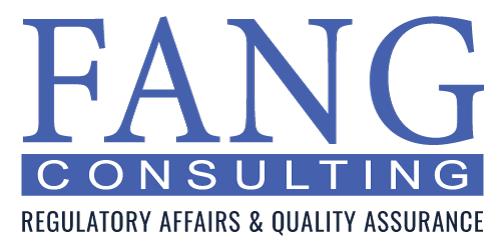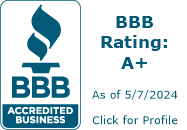
By Leslie Williams | July 6, 2021
Milk or dark chocolate? Paper or plastic? Mountains or the beach? EUA or 510(k)?The Emergency Use Authorization question may not be as polarizing as the others, but it has been dogging medical device and pharmaceutical companies for well over a year. The answer may seem obvious – choose the more streamlined EUA path and get your product to market quickly – but as the pandemic raged on and the EUA requirements changed, it became less clear.
In the early days of the pandemic, the EUA certainly seemed the smarter move as the need for PPE, ventilators, test kits, therapeutics and vaccines skyrocketed. But some manufacturers still opted to go the full 510(k) route, slow and torturous as it may be, even if it meant missing out on piles and piles of pandemic-induced revenue. Were they being old-school and obstinate – or strategic?
The EUA is Dead! Long Live the EUA!
Throughout the past year, the EUA has been both heralded and demonized, depending on which product or need was first up on the nightly news. When the vaccines were made available after just ten months, pundits and pontificators alike cheered the FDA for approving the inoculant so quickly. But when those rapidly approved COVID test kits started producing too many false negative or false positive results, the talking heads were quick to berate the FDA for inadequate oversight. Not exactly the type of publicity the FDA was hoping it would get.
Public opinion notwithstanding, the EUA really was established with the best of intentions. The emergency use authorization process was formally established in 2004 after the anthrax-in-the-mail incidents that followed the attacks on the World Trade Center. The Project Bioshield Act was intended to better prepare the US for a bioterror assault, and appropriated billions to stockpile countermeasures against a variety of known pathogens. The legislation also allowed the FDA to authorize unapproved products for emergency use against a threat to public health to help the healthcare system treat victims and minimize spread. However, the road to regulatory hell is well paved with governmental good intentions, and the COVID-related EUA process proved that point more quickly than anticipated.
The FDA issued only 22 EUAs in response to the H1N1 scare in 2009, but as of May 2021 had granted more than 600 authorizations to manufacturers of personal protective equipment, medical devices, diagnostic kits and tests, therapeutics and – most notably and uniquely – vaccines. However, of those 600 authorizations, xxx have been revoked due to quality and/or performance issues, highlighting the risks inherent in offering manufacturers lower testing and validation data requirements. Everything from surgical masks to IVD testing kits to proposed therapeutics have had EUAs revoked after real-world data indicated that the product was not performing to specification.
Alas, all good things must come to an end, and in March, overwhelmed with the sheer volume of applications, the Center for Devices and Radiologic Health (CDRH) stopped accepting new EUA applications. CDRH also began terminating pending EUAs across a wide range of product categories, leaving manufacturers with little recourse but to submit a full 510(k).
The 510(k) Turtle Wins the Race
Manufacturers with pending EUAs that have been terminated have no legal recourse, because the decision to stop accepting applications rests solely with the FDA. The only option open to these manufacturers is to continue toward a complete 510(k) submission and hope for market clearance. From the start, the FDA had strongly suggested that manufacturers consider preparing a full 510(k) in tandem with their EUA application, because any product granted an EUA must submit a complete 510(k) to remain on the market after the emergency ends. Those manufacturers who chose to go the full 510(k) route instead of the abbreviated EUA may win out in the end – and here’s why.
In the early days of the pandemic, face masks flooded the market as the demand increased, and the FDA issued an EUA for the use of masks as personal protective equipment. However, it was not clear what constituted an acceptable mask – surgical mask, N95 mask, that calico covering your grandma made for you – and masks of all types were submitted to the FDA for authorization. As the FDA began to realize that much more clarification was needed as to what constituted an acceptable mask, they issued a series of changes that demonstrate why choosing to go full 150(k) might have been the wiser decision:
- April 16, 2020 – FDA issues an EUA for the use of face masks as personal protective equipment
- April 24, 2020 – FDA amends the EUA, removing surgical masks, which require a 510(k) per 21 CFR 878
- May 2020 – FDA revises its Enforcement Policy from March, removing the 510(k) requirement for surgical masks, provided the masks comply with the remainder of the policy
- August 5, 2020 – FDA issues EUA for certain disposable, single-use masks and increases the testing requirement for surgical masks to include biocompatibility testing
- August 18, 2020 – FDA holds a webinar to clarify the Enforcement Policy, emphasizing that an EUA is not required for surgical masks as long as they comply with the policy
Adding to the confusion, the FDA still referred manufacturers to a 2004 standard that required four different validation tests – fluid resistance, filtration efficiency, breathability, and flammability – that, while intensive, still saved manufacturers a boat load of money. However, as the pandemic raged on and more and more non-compliant masks were identified, the FDA changed their testing requirements. By the time of the August 18 webinar, the FDA had expanded the requirements, tripling the amount of validation testing required and including a requirement for biocompatibility testing of the mask. Now, testing that had previously cost manufacturers around $35,000 to complete now cost $150,000 or more, and only one validation test separated the EUA process from the 510(k). That previously “cheap and easy” EUA path for masks suddenly equaled the expense of a full 510(k), which would be needed anyway once the public health emergency ended, so why not go straight to the 510(k) and save time, money, and aggravation?
The Choice is Still Yours
Not only did the EUA offer a quicker path to market, but it was also less expensive. The testing requirements for a standard 510(k) can be costly as well as time-consuming, so anyone with a beneficial new product stood to save a boat load of money by going the EUA route. But as the “simple” face mask demonstrates, the EUA option was not necessarily cheaper or more straightforward than submission for a traditional 510(k) pre-market notification.
Of course, as COVID recedes from the front page and HHS calls a close to the public health emergency, the EUA process with be shuttered and will no longer be an option. But history has proven that even if the EUA is being tabled for now, it will be revived again at some point in the future, when the next pathogen comes along to threaten the populations’ health. However, slow and steady wins the regulatory race, so manufacturers would be well advised to consider bypassing the uber-attractive EUA process and taking the time to go the full 510(k). Your FDA submission budget will thank you.




